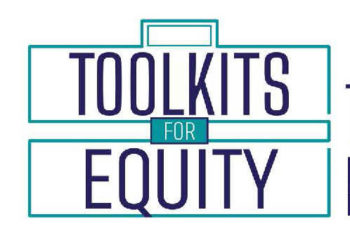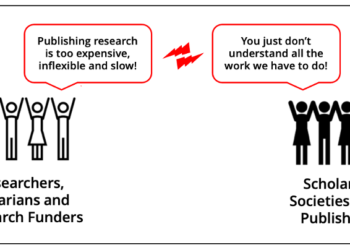Editor’s Note:Today’s post is by Laura Martin. Laura is a Senior Project & Change Manager at Wiley and a member of the Society for Scholarly Publishing’s Diversity, Equity, and Inclusion Committee.
When I ask people if they like the idea of change, most say yes. That’s because most of us are okay with change, at least when we direct it, and it has a positive outcome for us; although even when change benefits us, the reality of it can be challenging. However, when asked if they like having changes imposed on them, most people say no. Few people like being on the receiving end of a change over which they have no control, and even fewer people like dealing with a change that doesn’t take their needs into consideration.
Taking an inclusive approach to change gives your organization the best chance of success.
Inclusion is not just about bringing underrepresented groups into the conversation; inclusive behaviors affect everyone, and we all contribute to, and benefit from, a culture that is inclusive of different perspectives, as well as demographics. Moreover, studies suggest that investing in diversity, equity, and inclusion delivers revenue benefits (I would recommend starting with this Harvard Business Review article). And I know from experience that including the people who are impacted ensures that you get better, and quicker, results.
For those of you who are thinking that this sounds suspiciously like change management 101, you are right – it is. I manage transformational business change at Wiley and have learned a lot in my career as a project and change manager in academic publishing. I know which activities are more likely to not only deliver the expected outputs, but also the desired outcomes and benefits. Hand on heart, I can say that taking an inclusive approach is critical to delivering successful business change and building better-connected and more change-resilient workplace communities. Here are some top tips for inclusion. Let me know what else works for you and your organization!

Leading change from anywhere in the organization
You don’t have to be a senior leader or key decision-maker to create positive change. At any level of the organization, you can drive more inclusive practices – involving a cross-spectrum of stakeholders representing different regions, races, genders, ages, and disabilities, to name a few. Consider the people who you depend on or give work to: do you know who’s a caretaker or who manages living with a disability? How can you work with them to make a shared process better and more accessible, or to improve communications and cross-functional relationships? For example, I’m someone who likes text, but I often work with a colleague who is more of a visual communicator – she can’t stand blocks of text without imagery. She has challenged me to communicate better visually and, as a result, my presentations are stronger and I hope, resonate better with more people (although I’m still a work in progress).
Global working can mean working flexible hours
Scholarly communications is a global industry, with key stakeholders located all around the world. When you’re scheduling your next working group or team meeting, please consider how you can remove barriers for participants in other time zones. Update your calendar to show other time zones and consider whether the time you’ve selected has potentially excluded some attendees or will be so late or early in the day that they are too tired to fully participate. We routinely expect that colleagues in India, China, Japan, and beyond will work longer hours, but let’s try to challenge this Western-centric approach. Where you can, try to make the timing work for the whole group. Conversely, please don’t use inconvenient time zones to exclude people from the conversation – talk with impacted colleagues and get their input on how they want to be involved. You may find that they are willing to be flexible, especially if you show that you’re willing to be. Other options to consider include alternating meeting times and holding the same meeting in more than one time zone. Currently, I am managing a project team that includes colleagues across multiple time zones, including the US, the UK, Germany, and China. I admit, this can feel daunting, and I’ve had many a hair-pulling moment trying to figure out how to get time zones and schedules to line up. But I promise it is worth it. We are having a richer conversation because the whole team is looped in.
Check key dates
When working with global teams or audiences, consider key dates and holidays in other regions and check that your project timeline or email campaign does not exclude anyone. For instance, last month, February had a lot going on: from Chinese New Year to Black History Month. For months like this, try to avoid scheduling key meetings that need input from colleagues in countries during their festivities, so that they can enjoy their well-deserved time off work.
Make technology systems and solutions work for all of us
No one likes spending millions on a new IT system only to discover that end-users aren’t engaging (or can’t engage) with it. And no one wants to be told that they have to use a new system or process that has not been designed for them as an end user.
For any new platform, system, or process to be successful, it is essential not to assume that you can predict how your users will think and feel, but rather to invite a representative group of your anticipated end-users to help shape, deliver, and promote it. Then, be prepared to have your assumptions challenged! If this process doesn’t ensure that you deliver a better end product, it will certainly validate the quality, and you also have a ready-made network to help promote the end product when it’s ready.
For example, in 2019 Wiley launched our new Wiley Editing Services. Originally launched in 2013, the new platform was completely re-tooled with an enhanced suite of products and services for researchers, with a particular focus on article preparation and promotion support. As part of the testing phase, the project team was up against a tight set of deadlines and could have taken a streamlined approach by just having the core team run the test scripts. However, we agreed that this was short-sighted, so we opted instead to cast a wider net for testers, inviting researchers as well as colleagues from different functions across the business to be a part of the process.
We challenged them to break the platform, and then sat back and prepared ourselves to listen. And we were not disappointed: the feedback was rich and multi-layered, including the expected (e.g., ‘this link appears broken’) to the surprising (e.g., ‘using this terminology is potentially triggering for a stressed-out researcher’). In that pre-COVID world, we hosted in-person workshops in which colleagues could come and share their ideas (snacks were on offer!) and we also did virtual sessions for those who weren’t in the same location. One of my proudest professional moments was seeing the project team’s willingness to break down barriers and set aside their assumptions. By truly listening to everyone’s feedback we had a much better end product.
As a member of a project team you are in a position of power that allows you to define the level of inclusion for your business change and to ensure that the right people are included in the right conversations. So, when designing and delivering transformational business change, ensure you consider all those who will be impacted — directly and indirectly — and find ways to include them in the process. Inclusion is key to designing and delivering change that sticks, and that also means you are better set up to realise the full benefits, quicker.
People talk
Consider the people impacted indirectly by your proposed change in your communications about the change. For example, if you are streamlining a set of processes or restructuring a team within a business function, think beyond the colleagues in that function to also consider colleagues in other functions who may be impacted. This is especially true of central functions such as Finance, which typically touch every department in your organization. And remember that colleagues often talk to each other, even when they are not in the same team. Keeping everyone informed helps cut down on rumor and speculation and allows the wider organization to adapt more readily. A central element of creating any new process, or designing any new reporting structure, is to communicate the change to the right people, in the right way. Even if the business case stacks up, people want to know why the change is happening, what’s changed, what’s expected of them, and what’s in it for them to support the change.
Summary
Organizations often face a race against the clock to deliver value to colleagues and customers, and we all are trying to balance our workloads. As we seek to understand the ramifications of COVID on our industry, the pressures of time and workload are going to lead to even more conversations around budgets and priorities. Now, more than ever, activities that drive stakeholder buy-in can’t be seen as just nice-to-have; they are essential.
Thanks to Alice Meadows, Amy Beisel, Simon Holt, and Nick Horn for giving me feedback and encouraging me to develop my thoughts on the power of inclusion to create positive cultural change.
Discussion
1 Thought on "Guest Post — Inclusion: The Key to Delivering Successful Business Change"
Working for global organization, i could relate to every point that you made. Very well penned thoughts. Enjoyed reading it ! Thanks


